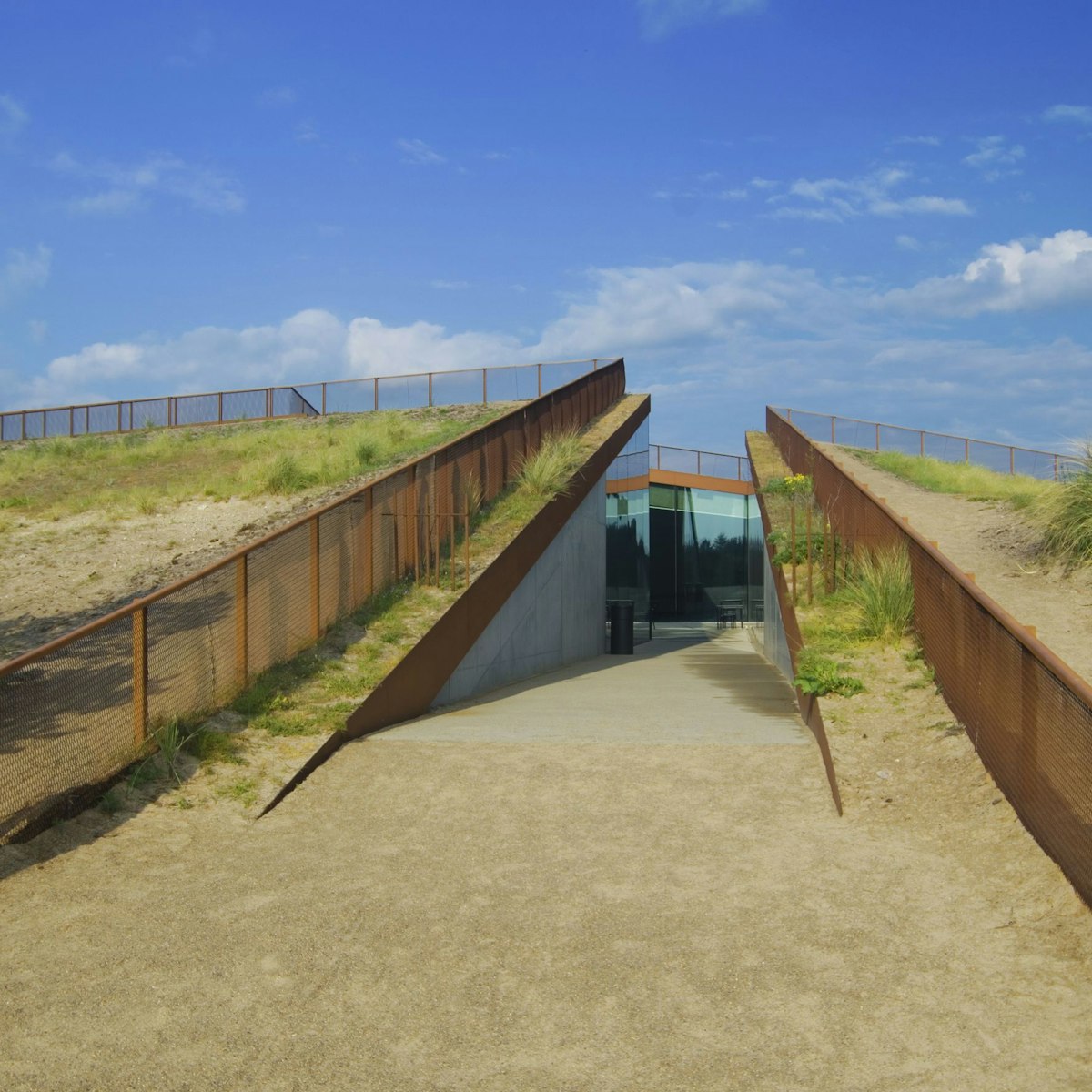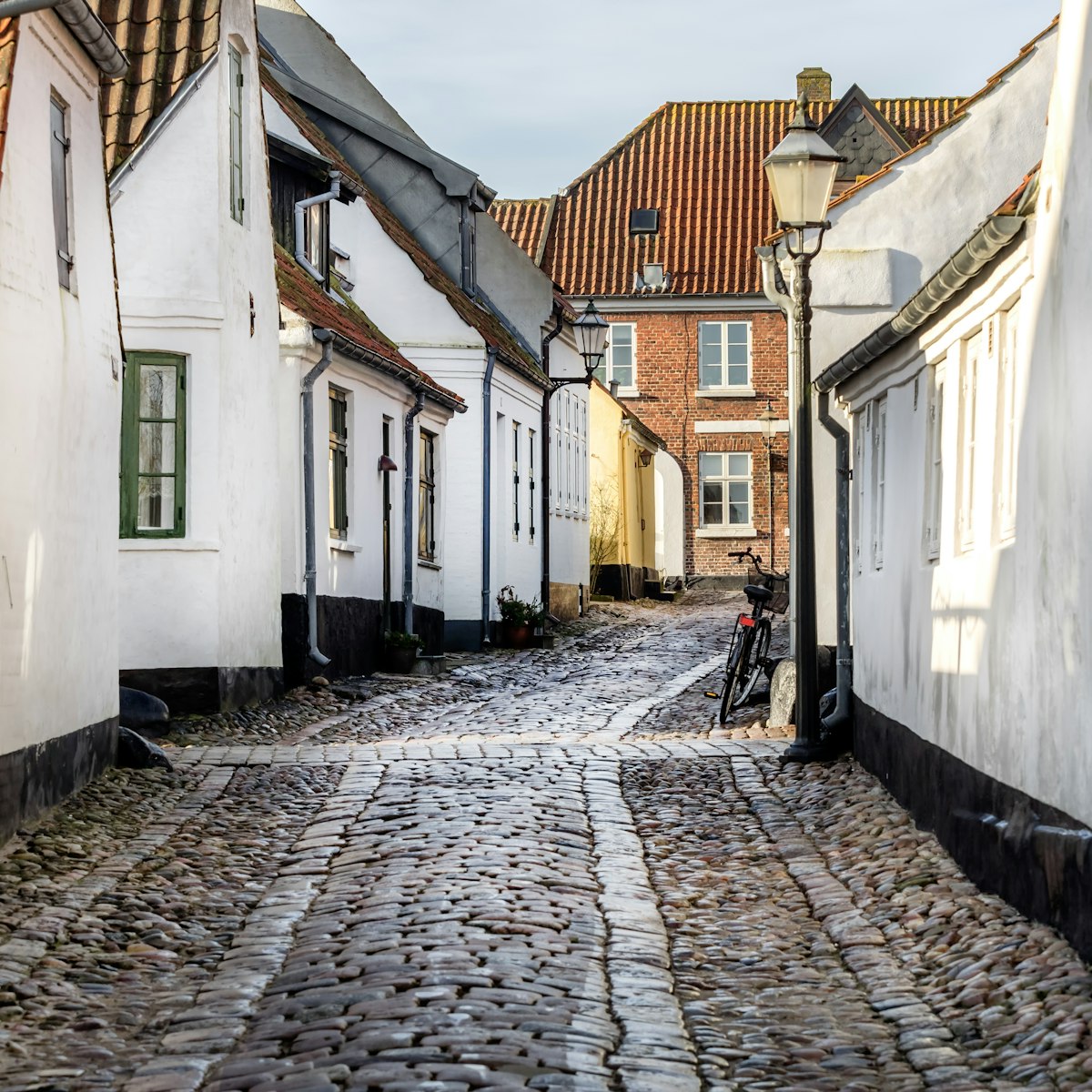Dominating Ribe’s skyline is the impressive Ribe Cathedral, which dates back to at least 948 (the earliest record of the existence of a bishop in Ribe) – making it the oldest in Denmark. The cathedral was largely rebuilt in 1150 when Ribe was at the heart of royal and government money, which in turn paved the way for some fine architectural structures.
The new cathedral was constructed primarily from tufa, a soft porous rock quarried near Cologne and shipped north along the Rhine. It took a century for the work to reach completion. Later additions included several Gothic features, but the core of the cathedral is decidedly Romanesque, a fine example of medieval Rhineland influences in architecture.
The interior decor is a hotchpotch of later influences. There’s an organ with a facade designed by renowned 17th-century sculptor Jens Olufsen, a baptismal font from 1375, and an ornate pulpit created in 1597 (a mark on the pillar behind the pulpit shows where the flood of 1634 reached). You can find remains of paintings from the 16th century on the last two pillars on the northern side of the cathedral, while in the apse are modern-day frescoes, stained-glass windows and seven mosaics created in the 1980s by artist Carl-Henning Pedersen. The funky mosaics enliven the church and add a fascinating contrast to the more sombre features.
For a fine view over the countryside, climb the 248 steps (52m) up the cathedral tower, which dates from 1333. A survey of the surrounding marshland makes it easy to understand why the tower once doubled as a lookout station for floods. Museum exhibits in the tower cover the cathedral's long history.
For added atmosphere, look out for summer classical-music concerts held in the cathedral.







